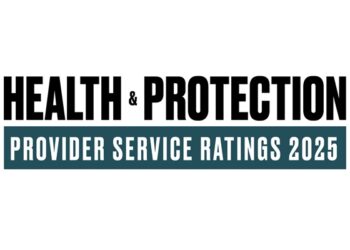The pandemic has driven awareness of the importance of customers taking out income protection (IP) cover as never before and the market is seemingly buoyant.
Advisers are capitalising on this renewed interest by introducing protection conversations early on in the process and reaching out to groups traditionally side-lined from conversations around protection.
But overly complex and inflexible products as well as the ongoing cost of living crisis could stifle further market growth as intermediaries are unable to support all their clients needs.
IP sales up
However at present the general feeling in the market is a positive one.
“IP sales have grown every year so they keep going in the right direction, but if the pandemic showed us anything. It was fragility,” Alan Knowles, managing director of Cura Financial Services, told Health & Protection.
“It showed us that being off work can affect any of us. So I think that helps the advice conversation.”
LifeSearch CEO Debbie Kennedy revealed the advice firm has seen more customers choosing IP in 2021 and so far in 2022.
This has been driven by a shift in the profiles of customers taking out IP to an older demographic of those aged over 44 and even over 55.
However, engaging younger customers has been a key focus for the Income Protection Task Force, according to co-chair Katie Crook-Davies.
“We’ve deliberately avoided blatant messaging about insurance and IP and have instead led with money topics this customer group are interested in, like buying their first property, saving for a once-in-a-lifetime trip and investing,” she said.
“We’ve subtly positioned IP as supporting those wider money goals. It’s probably too early to say if we’ve been successful in this, but we’re certainly starting to see some traction.”
And the continued growth of the IP market was a key mission of the taskforce’s inaugural Income Protection Awareness Week last year, Crook-Davies added.
“Given the noise on social media last September and the more than 1,000+ registrations, we’re confident we achieved this,” she continued.
“We were also keen to engage a new adviser audience, those new to IP, particularly those in the mortgage and wealth spaces, and we were pleased to see a large number of registrations from email addresses we didn’t recognise. For IPAW 2022, it’s much of the same, but hopefully on a bigger scale.”
Gender gap
The gender gap that has traditionally existed in the world of income protection is equally a cause for concern, according to Naomi Greatorex, owner of Heath Protection Solutions, who joined the IPTF’s steering group at the start of the year.
“I think there’s been difficulty with the gender gap within income protection,” she said.
“This is what I’m talking about with the Income Protection Task Force – looking at the difference between males and females taking out income protection because there is a reduction between women to men whereas with critical illness and life insurance there is more of a balance between men and women.
“You find that fewer women are taking out income protection and that is shown in the statistics.”
Greatorex suggested there were likely to be a number of reasons for this divide in coverage.
“It’s about women having access to advisers, having the right conversations with people and having more breaks in their careers such as stopping work to have children, so that will affect the balance,” she continued.
“Also women do more part time work or caring work – caring for either for children or older relatives – so all of these additions with women makes it so there’s definitely more need for women to have income protection advice for their more complex needs and they will have more changing needs.
“I think it’s about being able to assess these people if they’re in a partnership to make sure that women understand the value of themselves in their home.”
Getting the protection conversation in early
In terms of driving people towards taking out protection, Pam Brown, managing director at Pam Brown Mortgages, has reaped the rewards of introducing IP conversations as early as possible in interactions with clients and being able to refer enquiries to a dedicated expert in the form of her own daughter.
Brown explained that the first email her company sends out to customers includes a medical questionnaire and details about her daughter Nina, who is the company’s dedicated protection specialist – an approach that has certainly paid off.
“If you look at the mortgages that we did last year compared to protection policies, it’s almost one for one which is brilliant considering 48% of our business is buy to let,” Brown said.
And as Greatorex noted, it is that commitment to providing meaningful advice which is proving critical due to the complexity of income protection products, as people understand life insurance and critical illness much better.
“With income protection you have to take your clients on an advice journey and talk them all through how it works and their understanding of income protection because it isn’t a case of you’re diagnosed, you get a lump sum and then that policy finishes,” Greatorex said.
“It is a bit more complicated than that and also clients need to understand that they need to have regular reviews because of their changing income and changing employment. It is a more complicated product.”
More flexibility needed
Consequently, Greatorex argued that IP products need to offer more flexibility.
“I know they have improved the flexibility but where you could have the ability to maybe take a break and go back because when people are really stretched, when people are on maternity leave and so on, to have more ability to have a form of break point in the contract so you can start it again,” she continued.
“What we need to do is look at people’s changing lives and see how we can have more flexibility in the plans to be able to promote that.”
Another bone of contention in the design of IP products for Katie Tait, principal and owner of Tait Finance, is around short payout terms and annually reviewed premiums.
“When you go for the ones with short term pay outs up to a maximum of two years as opposed to the other ones that pay out to retirement age on a single claim if necessary, that’s another area perhaps where customers find it confusing,” she said.
“And then there’s the budget ones where it’s reviewed every year and goes up by age. I don’t like that feature of the product particularly.
“I think people will eventually cancel those after a few years as it goes up, I’d rather they were fixed at the outset across the board,” Tait added.
Threat from cost of living crisis
But looking ahead, the elephant in the room is the ongoing cost of living crisis and whether customers continue to see the value of taking out IP cover.
“I’m waiting for the impact of the cost of living crisis but income protection as a policy is actually quite cost effective,” Tait added.
“It’s not that expensive so because of the cost of living crisis, I would imagine my income protection sales will increase over and above critical illness cover – that type of thing – because it can work out quite cheaply.
“But I’m not getting any hints that people are shying away from protection because they’re saying they can’t afford it – not as yet but I think it’s coming.”
But Cura’s Knowles added the cost of living crisis is being referenced by customers – an issue he expects will only worsen.
“Certainly from our side we’re not seeing a drop in business as result of it but we are seeing people take less cover and people quoting it as a reason potentially not to spend or to spend less,” he said.
“So a good example on the IP side would be people going for a two year claim instead of a four year claim.
“I could well imagine that happening more because people are saying: ‘I need to not spend more and more money because everything else is costing so much more’. So we’re not seeing too much resistence yet but I think it will get worse.”






